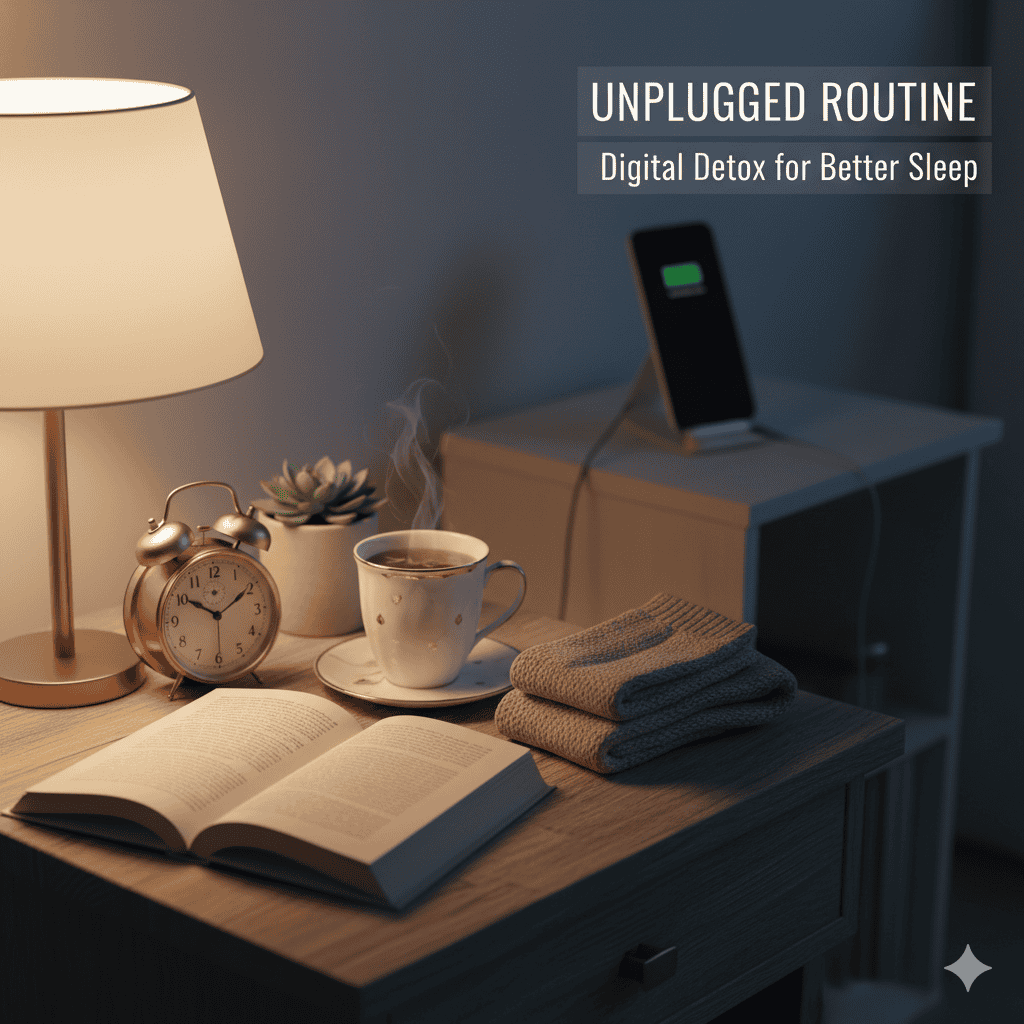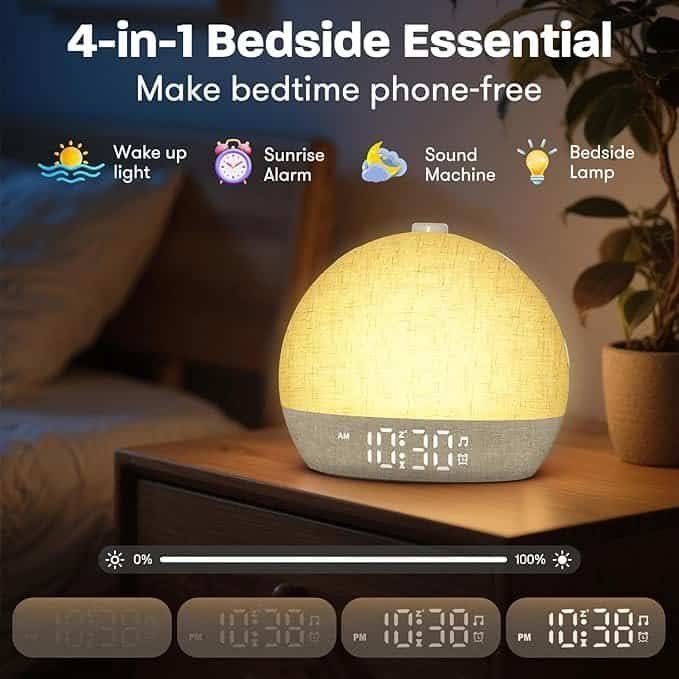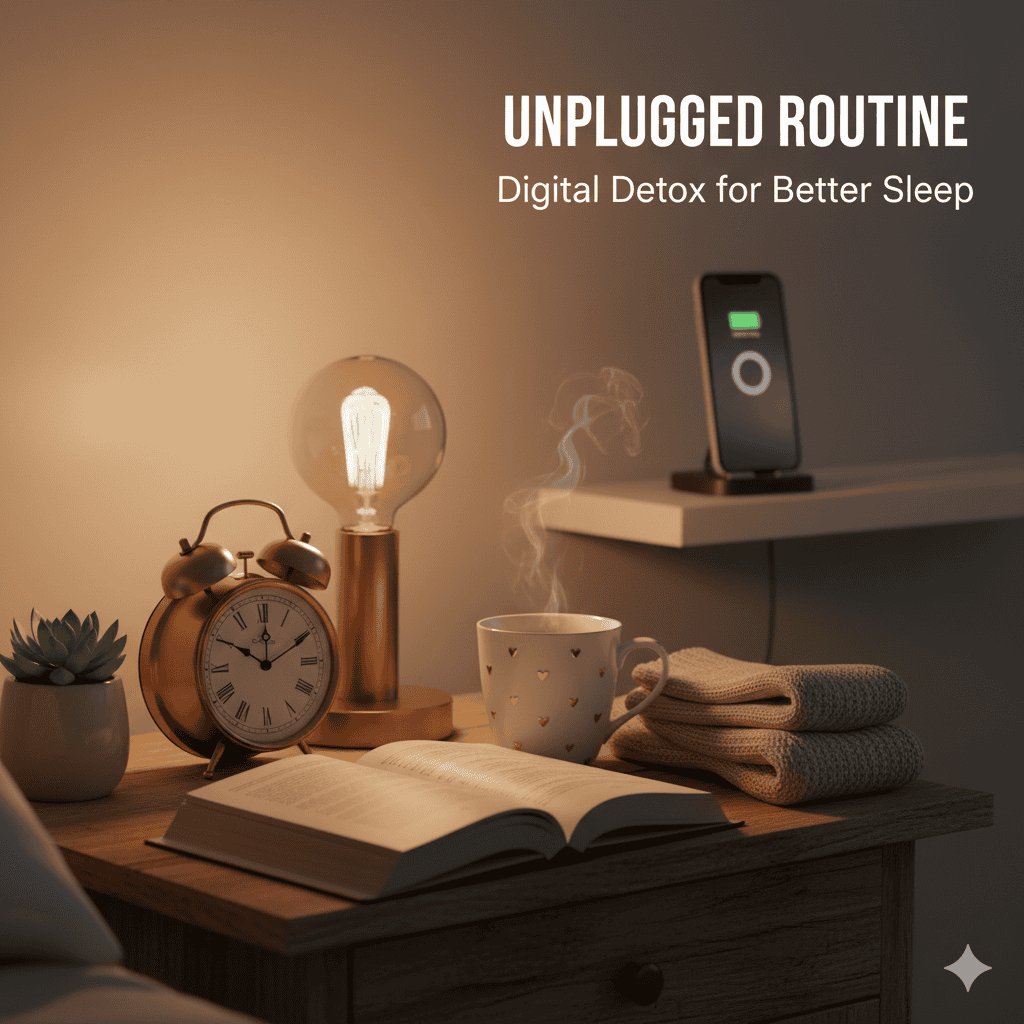It’s that familiar, frustrating moment. The house is quiet, the lights are low, and you’re finally in bed after a marathon day. You are bone-tired, your body aches for rest, but your mind is running a hundred miles an hour. And what’s in your hand? That glowing little rectangle, your portal to the world.
Your thumb is on autopilot, swiping through a hypnotic stream of perfectly curated lives on Instagram, heated debates on X, and five-minute craft videos you’ll never try. You tell yourself, “Just five more minutes,” but those five minutes magically stretch into an hour. When you finally force yourself to put the phone down, your brain is buzzing. Sleep feels less like a gentle drift and more like a cliff you can’t seem to fall off of.
If this nightly battle sounds painfully familiar, please know you are far from alone. This “tired but wired” feeling is a hallmark of modern life. We’re caught in a cycle of trading our most precious restorative hours for a digital fix. But what if the solution isn’t a new pill or a high-tech gadget, but rather, a conscious and powerful act of subtraction
The key to unlocking the deep, rejuvenating sleep you crave might be as simple as intentionally unplugging. This is the core of a digital detox, and its connection to sleep quality is one of the most profound wellness secrets hiding in plain sight. Let’s explore the deep-seated reasons our devices are sleep’s worst enemy and uncover seven transformative steps you can take—starting tonight—to reclaim your rest and revolutionize your mornings.

The Science-Backed Problem: Why Your Screens Are Sabotaging Your Sleep
To truly commit to change, you need to understand the ‘why.’ Your phone isn’t just a distraction; it’s waging a biological war on your sleep cycle. This assault comes from three distinct angles.
The Blue Light Bandit
You’ve heard the term “blue light,” but its effect is more potent than you might think. Your brain contains a tiny gland called the pineal gland, which acts as your body’s internal clock manager. As darkness falls, it receives signals to release a hormone called melatonin. Think of melatonin as the starting gun for the race to sleep; it’s the chemical messenger that tells your body, “It’s nighttime, time to power down.”
The specific wavelengths of blue light (around 460-480 nanometers) emitted by phones, tablets, and LED screens are particularly powerful mimics of bright daylight. When this light hits your eyes, it sends a direct message to your brain: “It’s still daytime! Stop producing melatonin!” This suppression throws your entire circadian rhythm out of whack. It not only makes it harder to fall asleep but also disrupts the quality of your sleep architecture, reducing vital REM (dreaming) and deep sleep stages, which are crucial for memory consolidation and physical repair.
The Cortisol Coaster
Ever felt your heart jump a little when your phone buzzes unexpectedly at night? That’s your ancient survival system kicking in. A notification—whether it’s a stressful work email, an alarming news headline, or even an exciting social media comment—can trigger the release of cortisol, our primary stress hormone.
Cortisol is the fuel for your “fight-or-flight” response. It heightens your alertness, increases your heart rate, and gets you ready for action. While essential for surviving genuine threats, this hormonal jolt is the absolute last thing you need when trying to relax. Checking your phone before bed puts your nervous system on a rollercoaster of micro-stresses, keeping you in a state of high alert (the sympathetic nervous system) and preventing the calming “rest-and-digest” system (the parasympathetic nervous system) from taking over. You’re essentially telling your body to prepare for a battle when it should be surrendering to rest.
The Dopamine Loop: A Brain on Overdrive
Beyond the light and the stress, the very design of our digital world is meant to keep our brains engaged. Social media feeds, games, and news sites are built on a principle of variable rewards. The unpredictable nature of what you’ll see next with each scroll—a funny meme, a message from a friend, a piece of juicy gossip—triggers the release of dopamine, a neurotransmitter associated with pleasure and craving.
This creates a dopamine loop, much like a slot machine, that is highly addictive. Your brain is constantly seeking the next little “hit.” This cognitive arousal is the direct enemy of sleep. Your brain can’t simply shut off; it needs a transition period to wind down. Scrolling keeps it revving, analyzing, and processing, making the shift to a restful state feel impossible. This often leads to “revenge bedtime procrastination,” where we defiantly steal time from sleep to get the unstructured leisure time we feel we missed during the day—a costly trade that leaves us drained and unprepared for tomorrow.
The Digital Detox Solution: 7 Actionable Steps to Reclaim Your Sleep
Understanding the science is empowering. Now, let’s turn that knowledge into action. A digital detox for sleep isn’t about becoming a luddite; it’s about creating intelligent, healthy boundaries. Here are seven practical ways to unplug and invite deep sleep back into your life.
Step 1: Create a Sacred ‘No-Tech’ Zone
Your bedroom should be a sanctuary for sleep, not a command center for your digital life. The single most effective change you can make is to declare your bedroom a 100% tech-free zone. This means no phones, no tablets, no laptops, and yes, even no TV.
How to make it work:
- Create a charging station somewhere else in your home, like the kitchen or living room. Make it a definitive end-of-day ritual to plug your devices in there.
- Replace the phone on your nightstand with things that promote rest: a book, a journal and pen, a glass of water, or a lamp for soft lighting.
- Worried about emergencies? You can still be reachable. Turn the ringer on and leave the phone in an adjacent room. You’ll hear it if it rings, but you won’t be tempted to scroll. You can also set “Do Not Disturb” to allow calls only from specific contacts.
Step 2: Establish a ‘Digital Sunset’
Just as the sun sets to signal the end of the day, create a “digital sunset” for yourself. This is a non-negotiable time each evening—at least 60 to 90 minutes before bed—when all screens go dark.
How to make it work:
- Set a recurring alarm on your phone labeled “Digital Sunset” or “Time to Unplug.” When it goes off, honor it.
- Think of this as your wind-down runway. This buffer period gives your brain time to clear the day’s clutter and allows your natural melatonin production to begin unimpeded. The longer the runway, the smoother the takeoff into sleep.
Step 3: Swap Scrolling for Soothing
The “what now?” feeling after you put your phone away is real. The key is to replace the scrolling habit with a new, calming bedtime ritual. Your ritual should be something you genuinely look forward to.
Soothing swap ideas:
- For the Mind: Read a physical book or magazine. Do a crossword puzzle. Write in a journal to offload worries. Listen to a calming podcast or audiobook on a smart speaker.
- For the Body: Do 10-15 minutes of gentle stretching or yin yoga. Take a warm bath with Epsom salts. Practice deep breathing exercises. Give yourself a simple hand or foot massage with lotion.
- For Creativity & Connection: Doodle or sketch in a notebook. Tidy up your space for the next day. Have a quiet, screen-free conversation with your partner or family member. Prepare a cup of herbal tea like chamomile or lavender.
Step 4: Ditch the Phone Alarm Clock
“But my phone is my alarm!” This is the number one excuse for sleeping with a digital saboteur. It’s an open invitation for late-night scrolling and a recipe for starting your day in a reactive, stressful state by immediately checking notifications.
How to make it work:
- Invest in a real alarm clock. A simple, cheap digital clock works wonders.
- Upgrade your wake-up experience. Consider a sunrise alarm clock. These gradually brighten the room before the alarm sounds, mimicking a natural sunrise and waking you up far more gently than a jarring beep. This turns the removal of your phone into a luxurious upgrade.

Step 5: Master the ‘Grayscale’ Trick
If you find it incredibly difficult to put your phone down, there’s a brilliant hack to make it significantly less addictive. Switch your phone’s display to grayscale.
Our brains are drawn to bright, stimulating colors—app designers know this and use it to their advantage. A black-and-white screen is instantly boring. The psychological pull to keep scrolling diminishes dramatically.
How to enable it (general instructions):
- On iPhone: Go to Settings > Accessibility > Display & Text Size > Color Filters. Toggle Color Filters on and select Grayscale. You can even set an Accessibility Shortcut to triple-click the side button to toggle it on and off.
- On Android: This varies, but look in Settings > Accessibility > Vision/Visibility Enhancements > Color Adjustment. Select Grayscale.
Step 6: Communicate Your Boundaries
Anxiety about being unreachable can sabotage your efforts. Proactively manage the expectations of people in your life.
How to make it work:
- Inform key contacts. Send a simple text: “Hey! I’m working on improving my sleep, so I’m turning my phone off from 9 PM to 7 AM. If anything is urgent, feel free to call!”
- Set a work auto-responder. If you get work emails late at night, set up an auto-reply that says, “Thank you for your message. I am offline for the evening and will respond during my working hours tomorrow.” This frees you from the pressure to be “always on.”
Step 7: Start Small and Be Patient With Yourself
You wouldn’t try to run a marathon without training. Likewise, don’t expect to perfect your digital detox overnight. The goal is sustainable progress, not immediate perfection.
How to make it work:
- Pick one thing. Start with the easiest step for you. Maybe it’s just charging your phone across the room. Master that for a week before adding another step.
- Use “habit stacking.” Link your new habit to an existing one. For example: “After I brush my teeth, I will put my phone on its charger in the kitchen.”
- Practice self-compassion. If you slip up and scroll until midnight, don’t spiral. Acknowledge it without judgment and simply recommit to your goal for the next night. Every night is a fresh start.

Beyond Better Sleep: The Ripple Effect of Unplugging
While transformative sleep is the headline benefit, the positive effects of a nightly digital detox will ripple into every corner of your life. You’ll wake up feeling more rested and clear-headed, ready to proactively start your day instead of reactively responding to a flood of notifications. You may find your focus sharpens, your mood stabilizes, and your anxiety levels decrease. You will reclaim precious time for reflection, creativity, and genuine connection with the people right in front of you.
Your Journey to Restful Nights Starts Tonight
The powerful connection between unplugging and deep sleep isn’t a fad; it’s a biological fact. Our devices have thrown our natural rhythms into chaos, but you hold the power to restore that balance. You don’t need to wait for Monday, the first of the month, or a new year’s resolution.
Your journey from restless nights to restorative slumber can begin the moment you finish reading this.
Ready to join the Unplugged Routine challenge? I invite you to pick just ONE of the seven steps above and commit to trying it for the next three nights. Will you buy an alarm clock? Will you set a “Digital Sunset” alarm? Or will you simply charge your phone in the living room tonight?
Let us know in the comments below which step you’re choosing! Sharing your commitment is a powerful way to stay accountable. Let’s support each other on this path to becoming more present, peaceful, and profoundly well-rested.